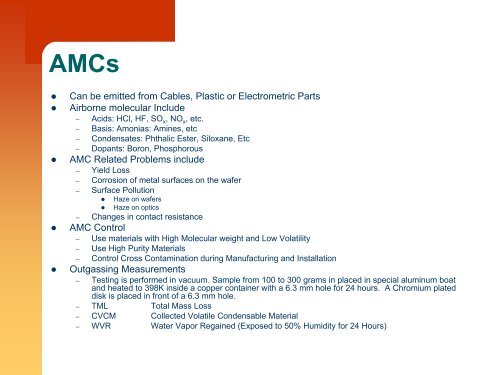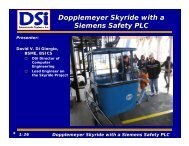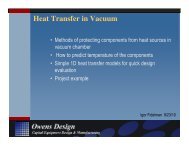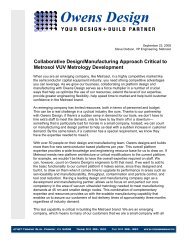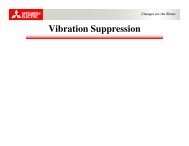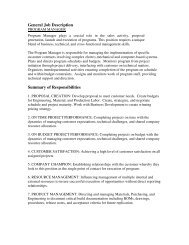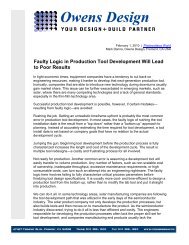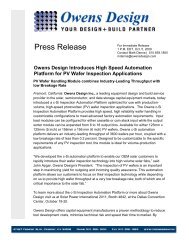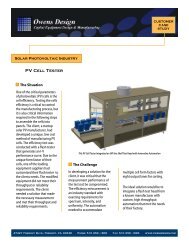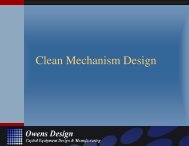Vacuum Design Constraints and Considerations - Owens Design
Vacuum Design Constraints and Considerations - Owens Design
Vacuum Design Constraints and Considerations - Owens Design
Create successful ePaper yourself
Turn your PDF publications into a flip-book with our unique Google optimized e-Paper software.
AMCs<br />
• Can be emitted from Cables, Plastic or Electrometric Parts<br />
• Airborne molecular Include<br />
– Acids: HCl, HF, SO x , NO x , etc.<br />
– Basis: Amonias: Amines, etc<br />
– Condensates: Phthalic Ester, Siloxane, Etc<br />
– Dopants: Boron, Phosphorous<br />
• AMC Related Problems include<br />
– Yield Loss<br />
– Corrosion of metal surfaces on the wafer<br />
– Surface Pollution<br />
• Haze on wafers<br />
• Haze on optics<br />
– Changes in contact resistance<br />
• AMC Control<br />
– Use materials with High Molecular weight <strong>and</strong> Low Volatility<br />
– Use High Purity Materials<br />
– Control Cross Contamination during Manufacturing <strong>and</strong> Installation<br />
• Outgassing Measurements<br />
– Testing is performed in vacuum. Sample from 100 to 300 grams in placed in special aluminum boat<br />
<strong>and</strong> heated to 398K inside a copper container with a 6.3 mm hole for 24 hours. A Chromium plated<br />
disk is placed in front of a 6.3 mm hole.<br />
– TML Total Mass Loss<br />
– CVCM Collected Volatile Condensable Material<br />
– WVR Water Vapor Regained (Exposed to 50% Humidity for 24 Hours)


